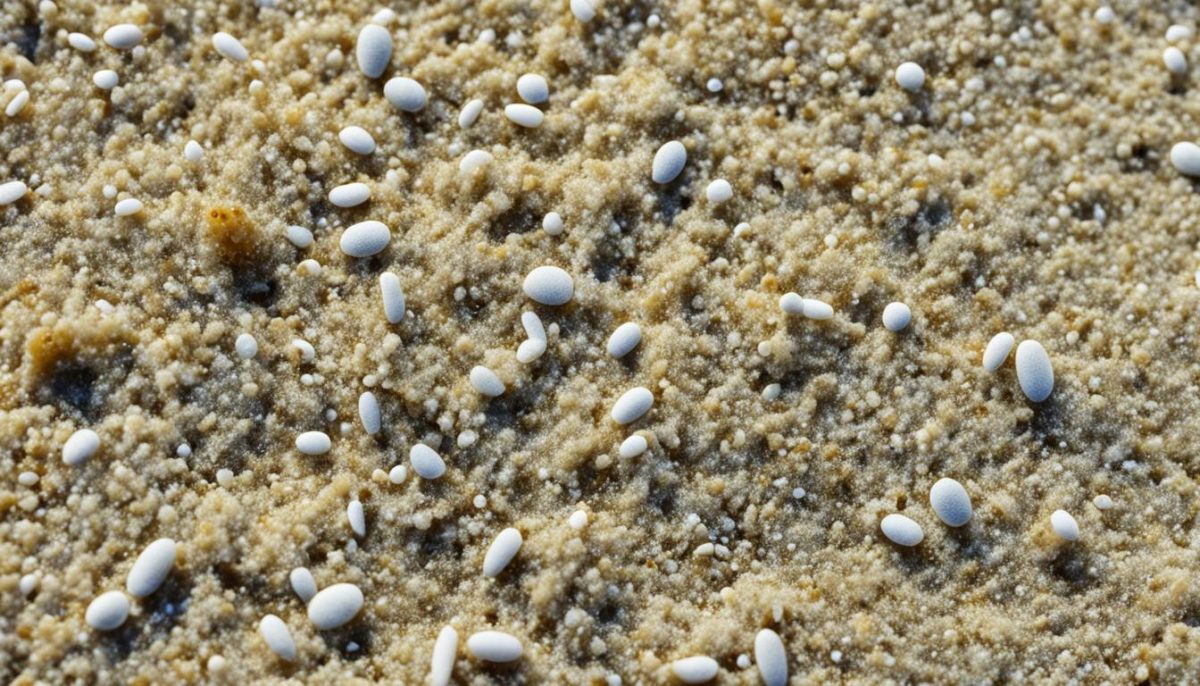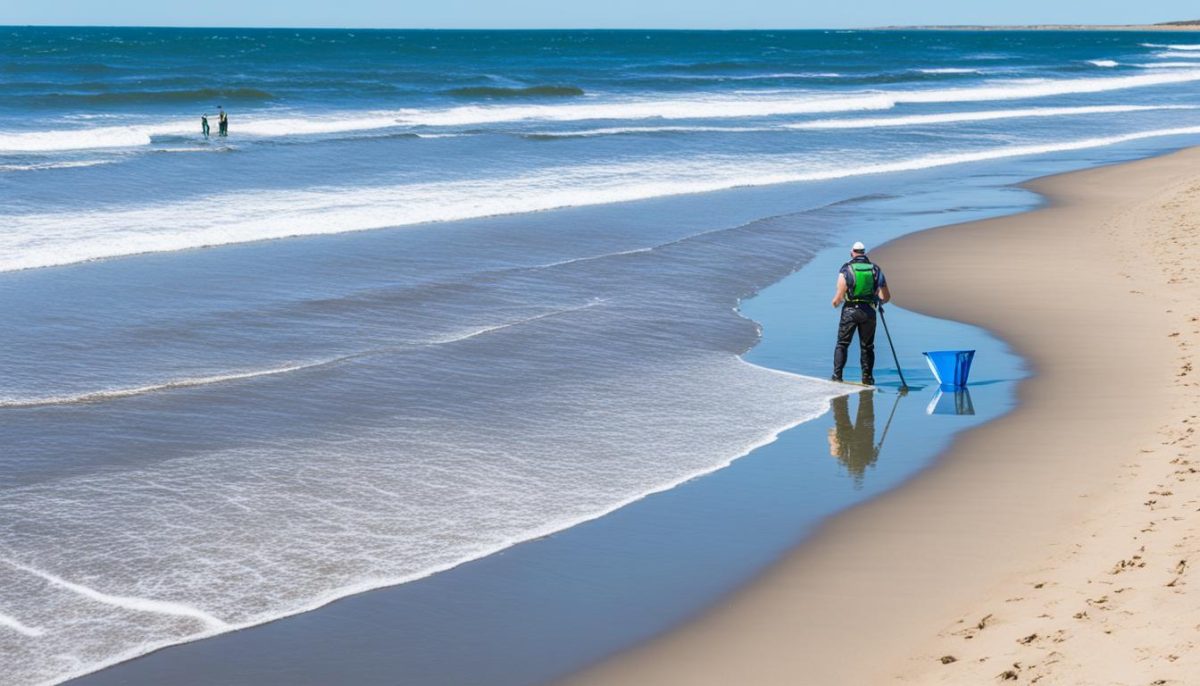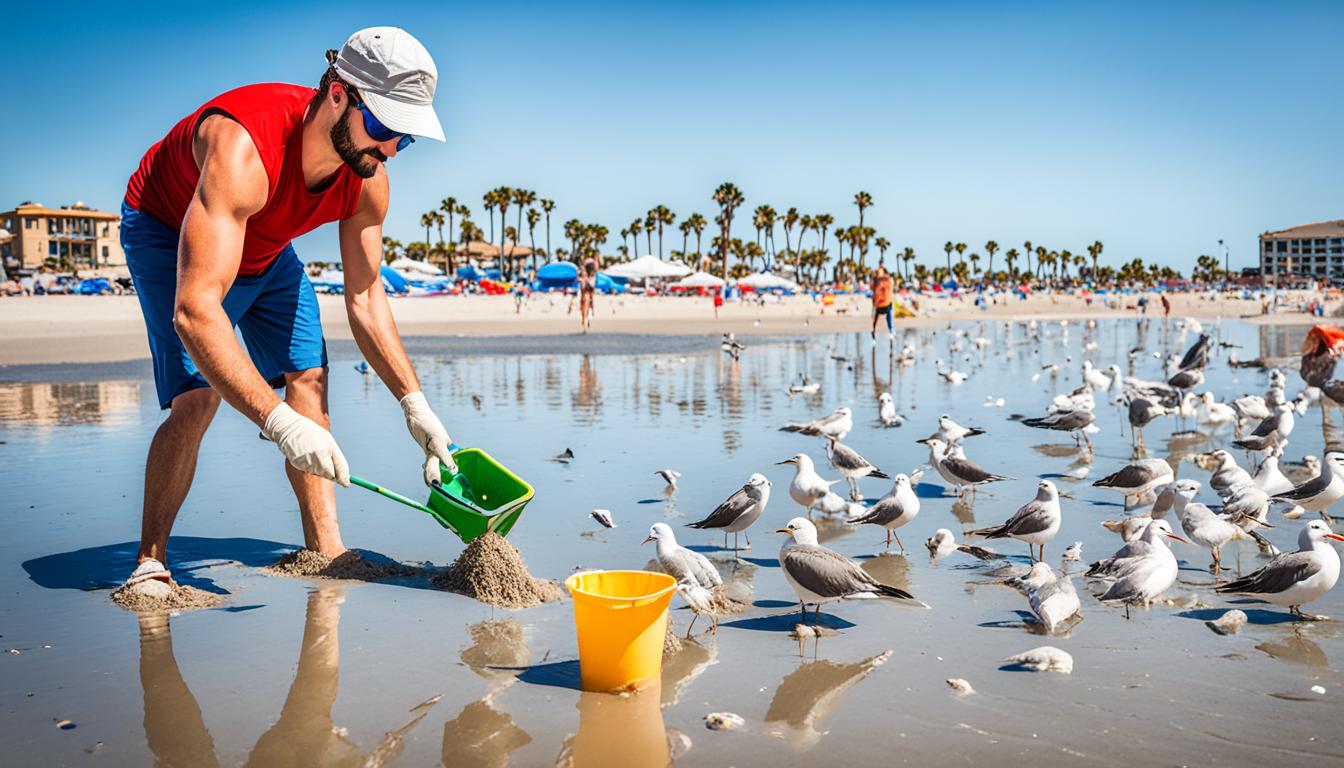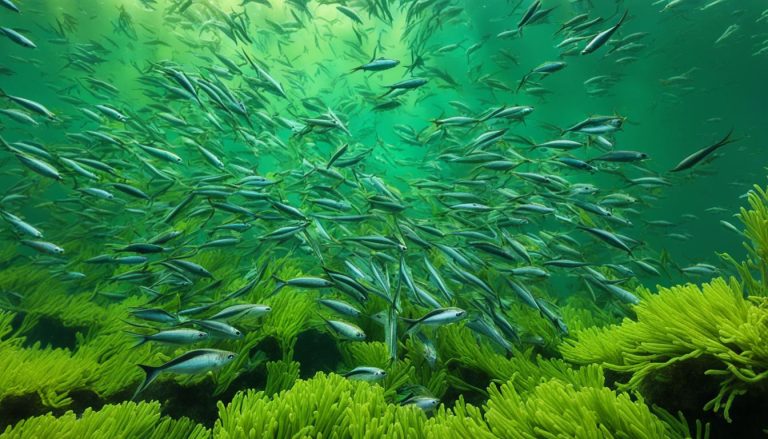Welcome to our comprehensive guide on how to effectively catch sand fleas. Whether you’re a passionate beachcomber or an avid angler looking to enhance your fishing bait arsenal, we’ve got you covered!
Beachcombing is a popular activity enjoyed by individuals of all ages. It’s a fantastic way to spend time by the shore, exploring the sand and discovering fascinating creatures like sand fleas. These tiny critters are known for their elusive nature and make for excellent bait for fishing.
In this article, we’ll provide you with insider secrets and expert tips on catching sand fleas like a pro. From understanding their habitat and behavior to learning the essential tools and techniques, we’ll equip you with everything you need to know for a successful sand flea-catching adventure.
So, get ready to dive into the world of sand fleas and uncover the hidden treasures they hold. Let’s begin!
Understanding Sand Fleas: Habitat and Behavior
Before diving into the techniques to catch sand fleas, it’s essential to understand their habitat and behavior. Sand fleas, also known as beach hoppers or amphipods, are crustaceans that can be found in coastal areas worldwide. They play a significant role in the ecosystem as decomposers and prey for various marine creatures.

Habitat
Sand fleas prefer sandy environments, typically residing on beaches, dunes, and coastal grasslands. They are mainly active in the intertidal zone, where the water meets the shore, as it provides them with the ideal conditions for survival. The moist, sandy substrate offers protection, while the constant ebb and flow of the tides provide a steady source of food.
In addition to beaches, sand fleas can also be found in estuaries and salt marshes, as these areas offer a combination of both marine and terrestrial elements that support their life cycle.
Behavior
Sand fleas have fascinating feeding and reproductive behaviors. They are omnivorous, feeding on both plant matter and detritus, as well as consuming small invertebrates and plankton. Their diet plays a vital role in nutrient cycling and helps maintain the health of coastal ecosystems.
These creatures are well adapted to their sandy environment and possess distinct behavioral characteristics. Sand fleas have the unique ability to burrow quickly into the sand when threatened, allowing them to escape predation and extreme temperatures. They are also excellent jumpers, using their powerful hind legs to propel themselves away from danger.
“Sand fleas are an integral part of the coastal ecosystem, contributing to its biodiversity and functioning. Understanding their habitat and behavior is crucial in capturing them effectively while respecting their ecological significance.”
Now that you have a better understanding of sand fleas’ habitat and behavior, you can proceed to the next section, where we will explore the tools and techniques required to catch these fascinating creatures.
Tools and Techniques for Catching Sand Fleas
Now that you have an understanding of sand fleas, it’s time to equip yourself with the necessary tools and techniques to catch them. This section will cover the best types of rakes, shovels, and sifters to use, as well as effective methods like using bait and stealthy approaches.
Tools
When it comes to catching sand fleas, having the right tools can make all the difference. Here are some essential tools you’ll need:
- Rake: A wide-toothed rake is perfect for sifting through the sand and scooping up sand fleas. Look for a durable and lightweight option that allows for easy maneuverability.
- Shovel: A small shovel or spade is useful for digging deeper into the sand to locate sand flea burrows. Choose a sturdy and compact shovel that fits comfortably in your hand.
- Sifter: A fine-meshed sifter can help separate the sand from the sand fleas. This allows you to quickly spot and collect the tiny creatures. Opt for a sifter with a comfortable handle and a durable screen.
Techniques
Beyond the tools, mastering the right techniques will greatly improve your sand flea-catching success. Here are some techniques to consider:
- Baiting: Using bait can attract sand fleas to your desired location. Some popular baits include clam necks, shrimp, or fish carcasses. Place the bait in the sand and wait for the sand fleas to gather around it.
- Stealthy Approaches: Sand fleas are sensitive to vibrations and can quickly burrow themselves in the sand. To catch them off guard, approach them slowly and quietly. This will increase your chances of grabbing them before they disappear into the sand.
- Observation: Watch for small depressions or “breathing holes” in the sand, as these indicate the presence of sand fleas. Carefully dig around these areas to uncover the sand fleas hiding beneath the surface.
Combining these tools and techniques will give you the upper hand in catching sand fleas. Remember to be patient and observant as you scour the sandy shores in search of these elusive creatures.

| Tool | Description |
|---|---|
| Rake | A wide-toothed rake for sifting through the sand and scooping up sand fleas. |
| Shovel | A small shovel or spade for digging deeper into the sand to locate sand flea burrows. |
| Sifter | A fine-meshed sifter to separate the sand from the sand fleas. |
Tips for Successfully Catching Sand Fleas
Now that you have the tools and techniques at your disposal, here are some additional tips and tricks to ensure your sand flea catching success. Pay attention to these insider secrets and become a sand flea-catching expert in no time!
First and foremost, selecting the right bait is crucial. Sand fleas are attracted to fresh, smelly bait such as shrimp or fish pieces. Opt for bait that is easily accessible and doesn’t break the bank.
Timing is everything when it comes to catching sand fleas. They are most active during low tide, so plan your beachcombing adventures accordingly. Make sure to check local tide charts and schedule your outings during the optimal time.
Lastly, patience is key. When searching for sand fleas, remember to move slowly and methodically. These tiny creatures can be difficult to spot, so a careful and observant approach will increase your chances of success. Don’t be discouraged if you don’t catch any on your first try. Keep practicing and honing your skills.




